Wildflowers, Grasses and Other Nonwoody Plants
Media

Species Types
Scientific Name
Ageratina altissima (formerly Eupatorium rugosum)
Description
White snakeroot looks very similar to thoroughworts, but it has triangular leaf blades that are more broadly angled or rounded at the base. White snakeroot is common statewide. It’s a toxic plant if eaten, so it’s good to be able to identify it.
Media
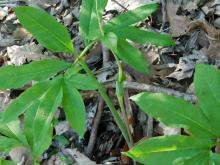
Species Types
Scientific Name
Arisaema dracontium
Description
What could be cooler than finding a green dragon? This leafy green plant with a long, noodly spadix is closely related to Jack-in-the-pulpit. It occurs in the same habitats but is less common and easily overlooked.
Media
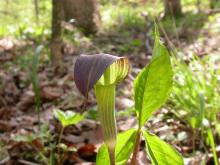
Species Types
Scientific Name
Arisaema triphyllum
Description
Preacher Jack in his “pulpit” is sheltered by the canopylike spathe, which is green with white and brown lengthwise markings. An unforgettable spring wildflower, Jack-in-the-pulpit is common throughout the state.
Media

Species Types
Scientific Name
Delphinium tricorne
Description
Dwarf larkspur is a single-stemmed perennial with an upright flower stalk bearing racemes of bluish-purple flowers. Like other larkspurs, there is a spurlike appendage behind each flower.
Media
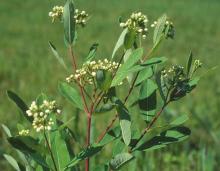
Species Types
Scientific Name
Apocynum cannabinum
Description
Indian hemp is a shrubby, upright perennial with opposite branches and milky sap. This native plant can be a troublesome weed in crop fields and gardens, but Native Americans used its tough, fibrous stems for rope-making.
Media
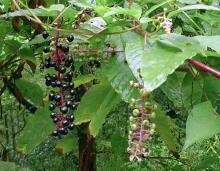
Species Types
Scientific Name
Phytolacca americana
Description
A tall, smooth, branching plant with red stems and juicy, dark purple berries, pokeweed is both toxic and a traditional edible potherb called poke salat. It is common statewide.
Media
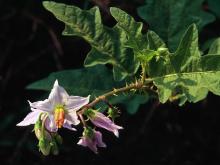
Species Types
Scientific Name
Solanum carolinense
Description
Horse nettle is a native perennial with spiny stems and leaves, white to purplish flowers, and toxic fruits that look like tiny yellow tomatoes. It does well in disturbed habitats, and many people consider it a weed.
Media
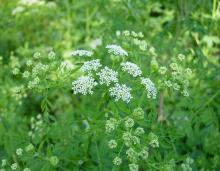
Species Types
Scientific Name
Cicuta maculata
Description
Full grown, water hemlock looks something like a gigantic Queen Anne's lace, but this common, widespread member of the carrot family is the most toxic plant in North America. All parts are deadly. A piece of root the size of a walnut can kill a cow-sized animal.
Media
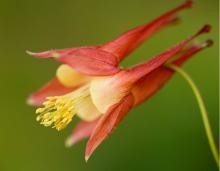
Species Types
Scientific Name
Aquilegia canadensis
Description
Native to much of eastern North America, eastern red columbine's range almost matches the breeding territory of the ruby-throated hummingbird, its number-one pollinator. Its bloom time matches the hummingbird's northward migration, too.
Media
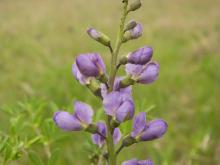
Species Types
Scientific Name
Baptisia australis
Description
Blue false indigo is a native bushy perennial with three-parted compound leaves and showy, upright stalks of blue pea flowers. The seedpods are inflated and turn black upon maturity, and the seeds rattle around in the dry pods.
See Also
About Wildflowers, Grasses and Other Nonwoody Plants in Missouri
A very simple way of thinking about the green world is to divide the vascular plants into two groups: woody and nonwoody (or herbaceous). But this is an artificial division; many plant families include some species that are woody and some that are not. The diversity of nonwoody vascular plants is staggering! Think of all the ferns, grasses, sedges, lilies, peas, sunflowers, nightshades, milkweeds, mustards, mints, and mallows — weeds and wildflowers — and many more!





















